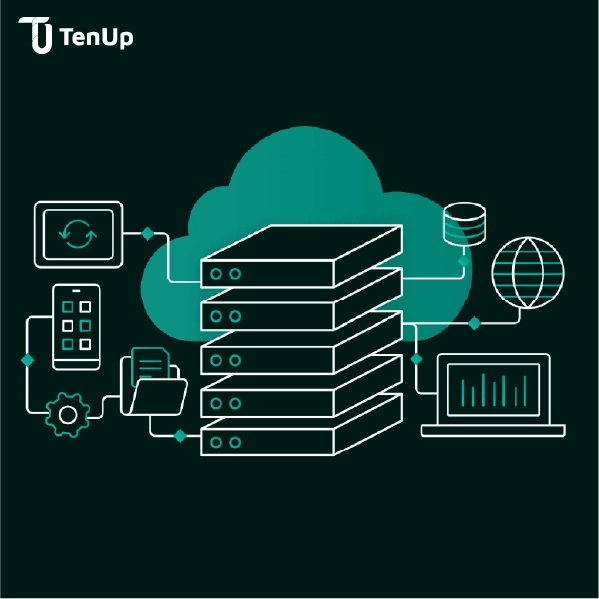Legacy System Migration: What It Is & Why It Matters
Legacy system migration is the process of transitioning from outdated software, hardware, or IT infrastructure to modern, more efficient systems. These legacy systems, often decades old, were once cutting-edge but have become obsolete, inefficient, or incompatible with current technologies. Legacy System Migration involves carefully moving data, applications, and business processes to new platforms while minimizing disruption to operations.
Migrating from legacy systems isn’t just a technical upgrade—it’s a strategic business decision. Organizations that embrace modernization gain a competitive edge by improving operational efficiency, enhancing customer experiences, and enabling faster decision-making. Moreover, it future-proofs the business, ensuring it can adapt to emerging technologies like AI, cloud computing, and IoT.
Key Components of Legacy System Migration
Modernization Goals: Legacy system migration aims to replace outdated technologies with modern, scalable, secure, and agile solutions—similar to how TenUp helped build a scalable maritime ERP solution using AWS. It involves transitioning to cloud computing platforms (AWS, Azure, GCP) or integrating AI capabilities (Generative AI, Computer Vision, etc.) that enhance operational efficiency and enable faster innovation. This also helps organizations improve their responsiveness to market changes and customer needs.
Data Transfer: Legacy system migration requires effective data transfer of both structured and unstructured data from legacy systems to new platforms. Organizations must ensure data integrity by implementing robust validation processes to prevent data loss or corruption during the transfer. Also, minimizing downtime using strategic planning and phased migration approaches helps maintain business continuity.
Process Optimization: Aligning existing workflows with the new systems helps maximize productivity and foster innovation post-migration. This may involve re-engineering business processes to fully leverage modern technologies. It helps organizations streamline operations, reduce redundancy, and enhance performance, leading to improved service delivery and customer satisfaction.
5 Major Challenges in Legacy System Migration & Solutions
Although not all legacy applications present a challenge, there is a significant risk associated with programs that have become outdated or obsolete. While these applications may still function, they often lead to compatibility issues with current operating systems, web browsers, and IT infrastructures.
Many enterprises rely on legacy applications and computer systems that continue to serve critical business functions. However, the main challenge lies in maintaining the operation of these legacy apps while simultaneously transforming them into more efficient code that leverages modern technology and programming languages.
The need to address legacy applications arises from the desire to optimize performance, enhance security, improve overall system stability, and user experience. New tools offer many new benefits and capabilities that agile software teams desire. Legacy System Migration from outdated applications to modern and compatible alternatives is crucial to meet the evolving technological demands of businesses and ensure seamless integration with the current IT ecosystem.
Let’s look at the key ways in which legacy modernization can help achieve organizational goals:
Reinforcing Security with Legacy System Migration
Consider the case of Equifax. Equifax, one of the largest credit reporting agencies, experienced a massive data breach in 2017.The breach exposed sensitive personal information of approximately 147 million people. The root cause of the breach was traced back to a vulnerability in Apache Struts, a legacy framework used by Equifax. Despite a security patch being available, Equifax failed to update their systems in a timely manner, leaving them vulnerable to the cyberattack.
Legacy systems are more susceptible to security breaches due to outdated architectures, lack of regular updates, and obsolete security protocols. This is because they were developed in a time when cybersecurity threats were less sophisticated, making them more vulnerable to attacks. They often lack the robust security features and protocols found in modern applications. Second, legacy apps may have unpatched vulnerabilities that have been discovered since their development, leaving them exposed to known exploits. As these applications are no longer actively maintained or updated, security patches may not be available, making them easy targets for attackers. Finally, legacy applications may rely on outdated or unsupported components, libraries, or frameworks, which increases the risk of security breaches. The lack of compatibility with current security standards and practices makes it challenging to secure these applications effectively. To mitigate these risks, organizations should prioritize the migration and modernization of legacy applications to ensure they meet current security requirements and protect valuable data from potential threats.
Legacy System Migration enables organizations to adopt new tools with robust security features, advanced encryption algorithms and real-time threat intelligence. In fact, updated systems offer better access controls, intrusion detection and response mechanisms to reduce vulnerabilities and fortify the overall security posture of the organization.
Achieving Regulatory Compliance Through Migration
Compliance with industry regulations and data protection laws is crucial for businesses today. However, legacy systems often struggle to meet these evolving compliance requirements due to outdated practices and limited controls. By migrating to modern technologies, organizations can align their systems with current regulatory standards like GDPR, HIPAA, and PCI DSS. This enables the implementation of robust security measures, access controls, and data privacy features necessary for compliance. Migration also allows for the adoption of modern compliance tools, ensuring effective adherence to regulations through functionalities such as data encryption and consent management. Additionally, migration facilitates seamless integration with other compliant systems, enabling standardized processes and centralized management of compliance-related issues. Overall, Legacy System Migration empowers businesses to meet compliance demands and protect sensitive data more effectively.
Building Reputation and Trust with Modern Systems
Security breaches and compliance failures can significantly damage an organization's reputation and wreck customer trust.Legacy System Migration demonstrates a proactive commitment to safeguarding sensitive data, ensuring the privacy and confidentiality of customer information. With strengthened security measures and compliance adherence, organizations can build trust with their customers, reassuring them that their data is in safe hands. This trust translates into customer loyalty, positive brand reputation, and increased market share.
Enhancing Scalability and Flexibility Post-Migration
Legacy systems often struggle to scale efficiently to accommodate increasing workloads or adapt to changing business needs. This hampers an organization's ability to seize new opportunities and respond to changing business dynamics swiftly. Through Legacy System Migration, businesses can adopt scalable and flexible architectures, allowing for seamless expansion, resource optimization, and adaptability. This scalability fosters business growth, enables efficient resource allocation, and positions organizations as agile players in their respective industries.
Boosting Market Positioning with Legacy Modernization
Migration from legacy tools enables companies to improve their market positioning and brand value by showcasing their commitment to innovation, agility, and customer-centricity. Modernizing their technology infrastructure allows companies to offer more advanced and competitive products or services, respond quickly to market demands, and stay ahead of their competitors. This positions them as industry leaders, enhances their reputation, and attracts customers who seek forward-thinking and innovative brands. Additionally, migrating from legacy tools demonstrates a proactive approach to embracing technological advancements, which can instil trust and confidence in customers, stakeholders, and partners, ultimately strengthening the company's market position and brand value.
Conclusion: The Strategic Need for Legacy Migration
Legacy System Migration is not merely about modernizing outdated systems; it is a strategic move that reinforces an organization's security posture, regulatory compliance, and market positioning. By migrating to modern technologies, businesses can strengthen their security measures, achieve compliance with evolving regulations, gain a competitive advantage, enhance customer trust, and enable scalability and flexibility. Embracing legacy migration is a proactive step towards ensuring long-term success, resilience, and growth in an increasingly digital and interconnected world.
A statista report forecasts the global digital transformation spending to reach USD 3.9 trillion by 2027, indicating the rising business need to update legacy systems with modern programming languages and protocols. At TenUp Software, we have successfully assisted numerous businesses in meeting their digital transformation requirements. Our expertise lies in facilitating seamless Legacy System Migration, ensuring minimal disruption, downtime, and data loss. Interested to find out more? Our migration expert can set up a free consultation session for you.

